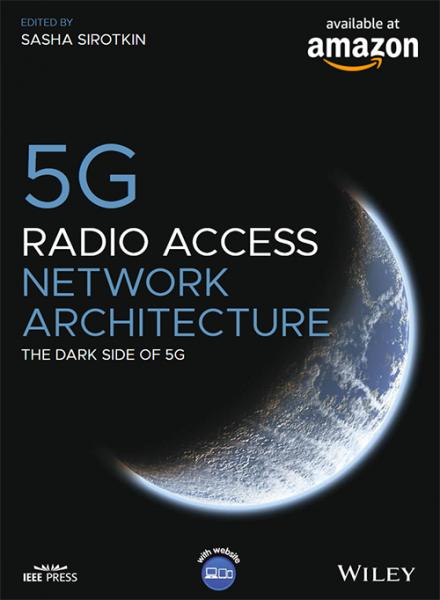Praemonitus, praemunitus
"5G Radio Access Network Architecture" book review

 Trying to define this book with just one word, the word "honest" comes to mind - despite the fact that it is a technical publication. From the first lines the author does not try to construct himself a highbrow expert, formulating the holy writ, but openly shows the differences in terminology or market approaches, or simply emphasizing the non-obviousness of certain marketing claims. And to put NB-IoT and LoRaWAN on an equal footing for a representative of the 3GPP camp is almost like for a Darwinist to admit the participation of aliens in the process of evolution. To continue the analogy, the author's confession "The question remains ... whether operators will be able to monetize their investments in 5G spectrum and network build-out" is akin to Galileo's winged and brave phrase "And yet it moves".
Trying to define this book with just one word, the word "honest" comes to mind - despite the fact that it is a technical publication. From the first lines the author does not try to construct himself a highbrow expert, formulating the holy writ, but openly shows the differences in terminology or market approaches, or simply emphasizing the non-obviousness of certain marketing claims. And to put NB-IoT and LoRaWAN on an equal footing for a representative of the 3GPP camp is almost like for a Darwinist to admit the participation of aliens in the process of evolution. To continue the analogy, the author's confession "The question remains ... whether operators will be able to monetize their investments in 5G spectrum and network build-out" is akin to Galileo's winged and brave phrase "And yet it moves".
The term "Author" requires a disclaimer: the key writer of the book is Sasha Sirotkin of 3GPP and Intel, but he invited a dream team of technologies’ professionals as contributors: 25 people from top global tech corporations focused on wireless networks – from Intel, Qualcomm and Cisco to ZTE Corp., RAD Data Communications, Thales Alenia Space, and other.
This is not a fiction book, but it's structured according to the scheme of classical literature: the rising action - the climax - the denouement. The rising action consists of three chapters: Introduction, Market Drivers and 5G System Overview. It is written in simple language and can give an introduction to the subject to any beginner. But this apparent simplicity hides the author's (or authors’, to be precise) deep knowledge not only of the technology, but also of the market aspects that are critical to the RoI of R&D.
The climax is definitely Chapter 4: "NG-RAN Architecture", 111 pages long, or over ¼ of the entire book. In the preface to this chapter the author is underlining there are various NG-RAN architectures due to the definitions in different standards development organizations and industry fora, for different use cases and development scenarios, and even sometimes with different business objectives. The book covers 6 of such architectures, including Small Cells as a separate identity. Each architecture description contains "Market Drivers" part, which distinguish the book from typical tech stuff: and again – honestly, showing the pitfalls.
The denouement is 3 chapters thick too: NG-RAN Evolution, Enabling Technologies, and NG-RAN Deployment Considerations. NG-RAN Evolution chapter covers two important NG-RAN architecture enhancements: relays and satellite networks (the latter is unique topic for cellular camp rep). Enabling Technologies shows other than RAN technologies critical to build and operate a wireless network, including transport networks, virtualization technologies, multi-access edge computing, open source RAN projects, SON, etc. The last chapter authors, the two empirics – Andreas Neubacher of Deutsche Telekom and Vishwanath Ramamurthi of Verizon Communications – describe various issues for an operator to consider when deploying cellular network. Picking up the torch of honesty from Sasha Sirotkin, they conclude that despite the previous generations of mobile networks, there is no established methodology for 5G networks planning and it still has to be developed – when new services making use of these networks emerge.
The book subhead is The Dark Side of 5G. In reality the one who read this book is like a stargazer who obtained images of the dark side of the Moon – and immediately got a full picture. As the ancient proverb is saying, forewarned is forearmed (or Praemonitus, praemunitus in Latin).
If you want to see the book, please refer to:

